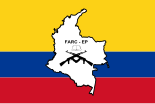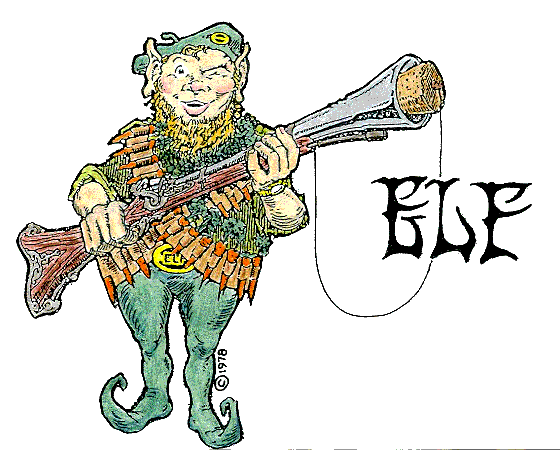I’ve improved the presentation of my network model for global terrorist collaborations. You can take a look at the code on my github, and definitely follow the link to view the network in full.
CLICK HERE TO SEE THE FULL NETWORK.

Please note that I replaced the node IDs for “the” Taliban (T), Boko Haram (BH), ISIL/ISIS (IS), Hamas (H), and”the” Al-Qaeda (without a regional modifier in the name) (AQ) by the initials herein, so that they can be easily pinpointed on the graph. You’ll probably want to open the lengthy node key in another window.
A few notes:
Criteria for inclusion. Please refer to my previous post.
Node Clean-up. I got rid of the nodes “Unknown”, “Individual” (meaning a non-organization), and “Other”, which had escaped my attention and unduly linked some pairs of organizations as having one degree of separation (e.g. both Group A and Group B collaborated with persons who were never discovered– this doesn’t mean they collaborated with the SAME person!). I’m also noticing some nodes here and there that have basically the same problem, such as “Palestinians”– that is not an organization. I will return to these sorts of nodes and remove them on a case-by-case basis.
Community Detection. I used the “fast greedy” community detection algorithm to assign and color the communities. Here is a comparison of community detection algorithms for networks with various properties. Before executing this algorithm, I combined any multiple edges between a pair of nodes into a single weighted edge, and got rid of loops (since “collaboration with oneself” is not what I was intending to portray in this model).
Let’s take a look at the output given by R. Upon inspection, these groupings seem to make sense; the organizations seem plausibly affiliated and frequently refer to the same cultures, regions, or ideologies. Some of the names could use a bit of clarification (for example, “Dissident Republicans” refers to breakaways from the IRA toward the end of the Northern Ireland conflict) or expansion/compression. As you may infer, the numberings to the left of the members of a group are not the node IDs that appear in the rainbow graph later, but rather numberings within the communities (only the first number is shown per line of community members).

Cliques. The largest cliques (complete subgraphs) were revealed as:
Clique 1. Bangsamora Islamic Freedom Movement (BIFM), New People’s Army (NPA), Moro National Liberation Front (MNLF), Moro Islamic Liberation Front (MILF), Abu Sayyaf Group (ASG)
Clique 2. Popular Resistance Committees, Popular Front for the Liberation of Palestine (PFLP), Hamas, al-Aqsa Martyrs Brigade, Democratic Front for the Liberation of Palestine (DFLP)
Clique 3. Popular Resistance Committees (PFLP), Hamas, Al-Asqa Martyrs Bridgade, Palestinian Islamic Jihad (PIJ)
Centrality. I wanted to know how “influential” each node was. Of course, centrality is not the only way to measure this, especially in a case like the GTD where we have so much other information, such as victim counts. Even going on centrality, there are several centrality measure options in igraph for R; I went with eigencentrality. To quote from the manual:
“Eigenvector centrality scores correspond to the values of the first eigenvector of the graph adjacency matrix; these scores may, in turn, be interpreted as arising from a reciprocal process in which the centrality of each actor is proportional to the sum of the centralities of those actors to whom he or she is connected. In general, vertices with high eigenvector centralities are those which are connected to many other vertices which are, in turn, connected to many others (and so on).”

The “scale” option fixed a maximum score of 1.






















So who are FARC (most central), al-Shabaab (tied for least central) and ELF (tied for least central)?
 The Revolutionary Armed Forces of Colombia (FARC) is a Communist guerilla movement involved in the Colombian armed conflict that’s been going on since the 1960s, with membership at times estimated to approach 20,000. They have their hands in a diverse array of organized crime in the region. However, their membership is mostly the poor rural, and is populated by men, women, and children. They are said to be organized in small groups, which are then clustered into larger blocs. Given their size and duration, it makes sense that FARC would have had the most collaborators historically.
The Revolutionary Armed Forces of Colombia (FARC) is a Communist guerilla movement involved in the Colombian armed conflict that’s been going on since the 1960s, with membership at times estimated to approach 20,000. They have their hands in a diverse array of organized crime in the region. However, their membership is mostly the poor rural, and is populated by men, women, and children. They are said to be organized in small groups, which are then clustered into larger blocs. Given their size and duration, it makes sense that FARC would have had the most collaborators historically.
 Al-Shabaab (“Party of Youth”) is a salafist jihadist organization based in East Africa, affiliated with al-Qaeda and promoting militant Islam. They control a large part of Somalia and are in conflict with African Union and Ethiopian fighters. The group is believed to have up to 1,000 members, and has claimed responsibility for several major attacks with high death counts (warning: graphic content from surveillance tapes during an attack). They are active online, producing recruitment videos and repeatedly making Twitter accounts. Honestly, I haven’t figured out why they don’t have any GTD-documented collaborations, since they’re known to be affiliated with other militant Islamic jihadists.
Al-Shabaab (“Party of Youth”) is a salafist jihadist organization based in East Africa, affiliated with al-Qaeda and promoting militant Islam. They control a large part of Somalia and are in conflict with African Union and Ethiopian fighters. The group is believed to have up to 1,000 members, and has claimed responsibility for several major attacks with high death counts (warning: graphic content from surveillance tapes during an attack). They are active online, producing recruitment videos and repeatedly making Twitter accounts. Honestly, I haven’t figured out why they don’t have any GTD-documented collaborations, since they’re known to be affiliated with other militant Islamic jihadists.
 The Earth Liberation Front is an ecological terrorism group that is by creed constituted of independent cells (“leaderless resistance”). They are active in Europe, North America, and South America, and attributed actions have typically included property damage, in many cases arson. Although ELF is considered the spiritual successor of ALF, tautologically, ELF actions are independent and anonymous, so it makes sense that they would not have collaborators as such. So what are they (and al-Shabaab) doing on this list, if they didn’t collaborate in any incidents? ELF must have been one of the organizations listed in the GTD as being both the first and second perpetrator on an incident, and when self-loops were removed ELF was left with zero eigencentrality. (Perhaps it would have been beneficial to remove such nodes before running the eigencentrality calculations. On the other hand, it’s likely that multiple cells/factions of each group collaborated with one another However, the order of the list above is not altered by this inclusion.)
The Earth Liberation Front is an ecological terrorism group that is by creed constituted of independent cells (“leaderless resistance”). They are active in Europe, North America, and South America, and attributed actions have typically included property damage, in many cases arson. Although ELF is considered the spiritual successor of ALF, tautologically, ELF actions are independent and anonymous, so it makes sense that they would not have collaborators as such. So what are they (and al-Shabaab) doing on this list, if they didn’t collaborate in any incidents? ELF must have been one of the organizations listed in the GTD as being both the first and second perpetrator on an incident, and when self-loops were removed ELF was left with zero eigencentrality. (Perhaps it would have been beneficial to remove such nodes before running the eigencentrality calculations. On the other hand, it’s likely that multiple cells/factions of each group collaborated with one another However, the order of the list above is not altered by this inclusion.)
That’s all for now!